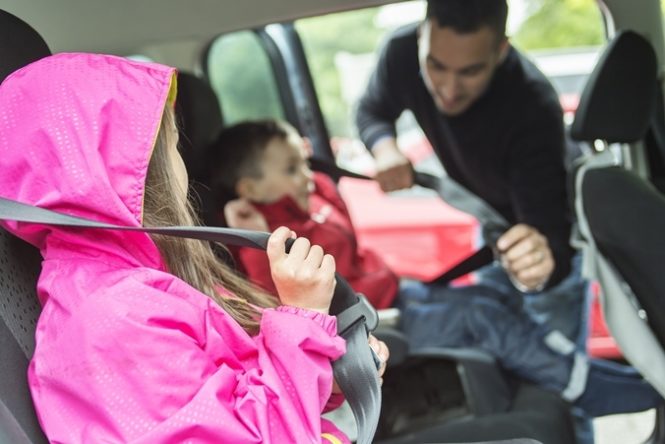
Road Safety
There are many rules that must be followed when you are driving. For example, you must:
- wear your seatbelt
- have your driver’s licence and the car registration with you
- do not hold, use or look at a cell phone (it is against the law - experienced drivers can use hands-free cell phones that can be operated by voice commands or with one touch)
- obey speed limits – you may need to drive even slower depending on the road conditions
- always slow to at least 60 km/hr (or less if the speed limit is lower) when workers are present in a highway work zone
- obey traffic signals and traffic signs
- at an intersection without traffic signs, yield to the car to your right
- always pull over to the right as soon as it is safe when an ambulance, police car or firetruck with their siren on is approaching
- signal and make sure it is safe before changing lanes
- leave enough space between you and the car in front of you so that you can safely stop if required
- give pedestrians the right of way
Never drive when you are distracted. You could be distracted by eating, changing music, texting or putting on makeup. Avoid driving when you are upset or overtired. Do not be impatient behind the wheel.
Winter Driving
Winter in Saskatchewan brings icy roads, poor visibility and snow ruts. Some days even a quick trip to the corner store can be a challenge. For safe winter driving remember:
- leave lots of extra driving time – even driving the speed limit could be a traffic offence if it is too fast for the road conditions
- take the time to clear your car of snow and ice – it is a traffic offence to drive a car when you cannot see out the windows on both sides, as well as the front and back
- drive slow – stopping on snow takes four times longer and stopping on ice takes twelve times longer
- stay well back from any snow plows in front of you – they will pull over periodically to let people get by
- never leave your car running when you are not in it – your car could be stolen!
- never leave children alone in a car - this is a safety hazard
- do not run your car in idle-free zones or anywhere that is closed in – exhaust can cause serious harm or even death if a car is running in an enclosed space like a garage
Drugs, Alcohol and Driving
There are legal limits for the amount of alcohol or drugs that can be in your system. It is against the law to drive when your blood alcohol level is higher than the allowed limit. New drivers and anyone 21 or under cannot have any alcohol or drugs in their system. Experienced drivers must have alcohol level below .04 and no drugs in their system.
Being above these limits is a traffic safety offence that can result in your licence being suspended and your vehicle being impounded. They are other consequences as well such as being required to take impaired driving education and losing safe driver recognition points.
It is a crime to drive when your ability to drive is affected by alcohol or drugs. The amount of alcohol or drugs you have used does not matter. If you are not safe to drive you can be charged. It is also a crime to drive over the limit for alcohol or drugs set in the Criminal Code. It is a crime to drive with an alcohol level over .08 or with a blood level over the limit for any drug. Different drugs have different limits and for many drugs having any amount of them in your system when you are driving is a crime. These crimes have serious consequences including fines and, if it is not your first offence, jail time.
The police can test you if they think you have been using drugs or drinking alcohol. They can test your ability to keep your balance, follow movement of an object and follow instructions. If you fail these tests they can require a blood, saliva or urine sample to test for drugs and alcohol.

